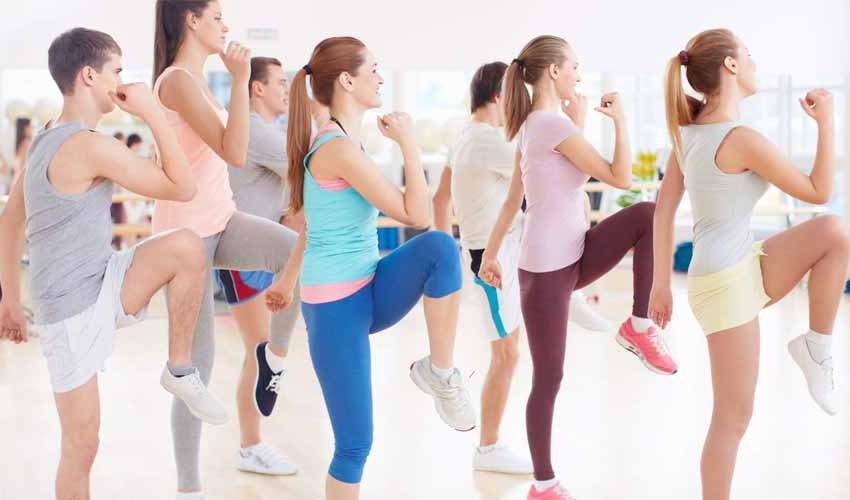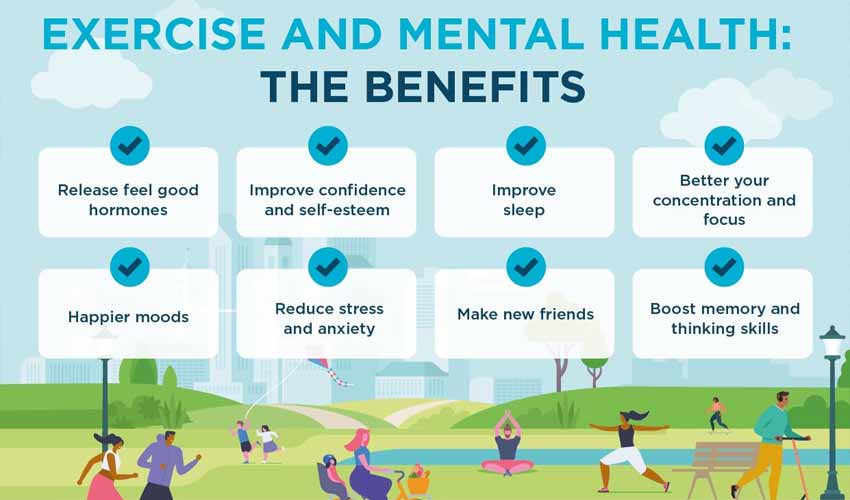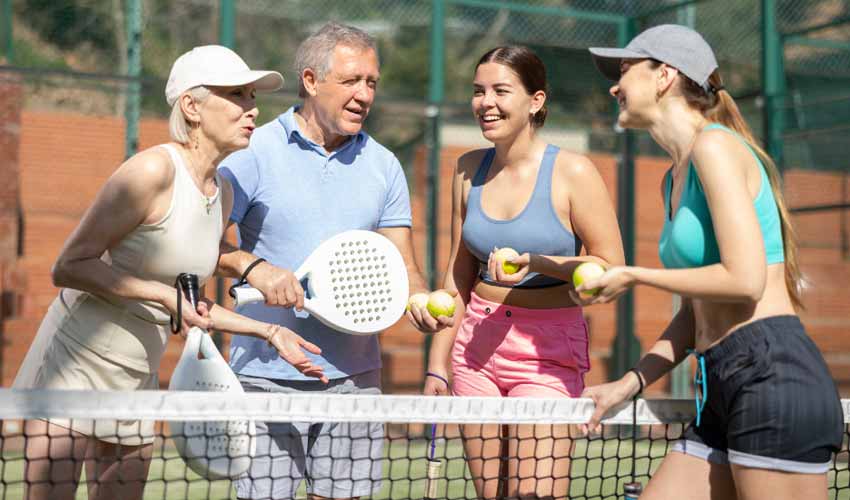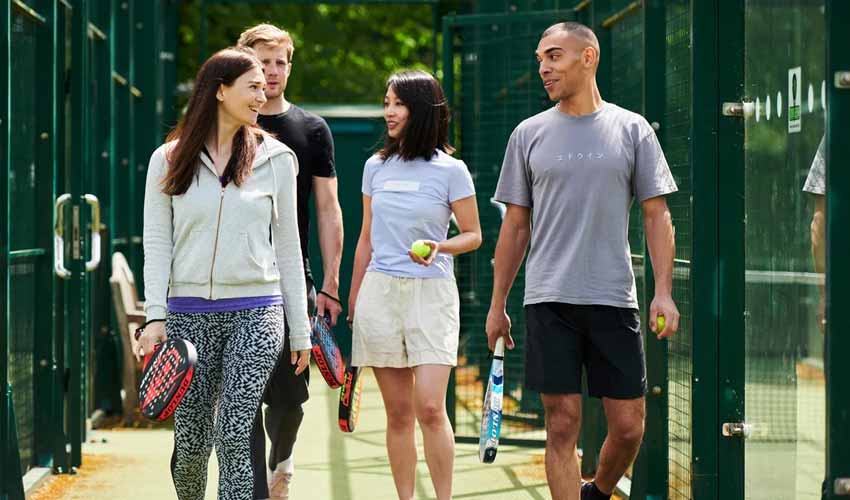The Physical Transformation: Surprising Padel Benefits for Your Body
Looking for a fun, social, and effective way to boost your fitness in 2025? It’s time to unlock the incredible padel benefits that are transforming lives worldwide. This fast-paced racquet sport delivers a powerful mix of cardio, strength, mental clarity, and community, all in one dynamic game.
From burning calories and building muscle to reducing stress and making new friends, padel offers benefits for every body and every lifestyle. Whether you’re new to the court or a seasoned player, there’s never been a better time to pick up a racket and power up your life with padel.
Full-Body Cardiovascular Blast
- Continuous movement: rallies, sprints, lunges.
- Elevated heart rate for sustained periods.
- Improved circulation and endurance.
- Reduced risk of heart disease, stroke, and hypertension.
- How padel compares to other cardio activities (e.g., running, cycling).
Calorie Incinerator for Weight Management
- Significant calorie expenditure per session (e.g., 400-700+ calories per hour depending on intensity).
- Effective tool for weight loss and maintaining a healthy weight.
- Boosts metabolism even after play.
- Combining padel with nutrition for optimal results.
Agility, Coordination, and Reflexes on Point
- Quick changes in direction and pace.
- Hand-eye coordination development through ball tracking and shot execution.
- Sharpened reflexes from fast volleys and wall rebounds.
- Benefits for everyday activities and other sports.
Surprisingly Low-Impact, High Reward
- Smaller court size means less ground to cover than tennis.
- Use of walls can reduce strenuous running.
- Softer ball and often underhand serves can be gentler on joints.
- Ideal for those seeking a less jarring racquet sport option.
- Comparison of impact forces with tennis or squash.
Building Lean Muscle and Strength
- Leg strength and endurance from constant movement and squatting.
- Core engagement for stability and power in shots.
- Arm and shoulder strength for volleys, smashes (bandejas, viboras).
- Functional strength development applicable to daily life.
Enhanced Flexibility and Balance
- Reaching for shots improves range of motion.
- Dynamic stretching involved in gameplay.
- Improved proprioception and balance through varied footwork.
- Importance of warm-ups and cool-downs to maximize flexibility gains.

Mind Matters: The Mental and Emotional Padel Benefits You Can’t Ignore
Stress Buster Supreme: Leave Your Worries Off the Court
- Physical exertion as a natural mood booster (endorphin release).
- Focus required for the game provides a mental escape from daily stressors.
- The social aspect acts as a buffer against stress and anxiety.
- Mindfulness in motion: being present in the game.
Cognitive Boost: Sharpening Your Mind with Every Game
- Strategic thinking and problem-solving (shot selection, court positioning).
- Improved concentration and focus.
- Enhanced decision-making skills under pressure.
- Anticipation and reading opponent’s moves.

Mood Elevation and Fighting the Blues
- Sense of accomplishment and achievement.
- Positive social interactions fostering a sense of belonging.
- Sunlight exposure (for outdoor courts) boosting Vitamin D and serotonin.
- Combating symptoms of mild depression and anxiety.
Building Resilience and Mental Toughness
- Learning to cope with wins and losses.
- Developing perseverance through challenging rallies or matches.
- Improving composure under pressure.
- The importance of a growth mindset in skill development.
The Sheer Joy Factor
- Having Fun is Serious Business!
- Padel’s inherent playfulness and fast learning curve.
- Laughter and camaraderie on the court.
- The addictive nature of improving and mastering new shots.
- Why enjoyment is key to long-term adherence to any activity.

The Social Smash: Padel Benefits for Connection and Community
Teamwork Makes the Dream Work: The Power of Partnership
- Communication and coordination with your partner are crucial.
- Shared goals and strategies.
- Building trust and rapport.
- Learning to support and motivate each other.
A Welcoming Community for All Ages and Skill Levels
- Padel clubs as social hubs.
- Easy to find playing partners.
- Mix-ins, tournaments, and social events.
- Intergenerational play: families and different age groups playing together.
Making New Friends and Strengthening Bonds
- Natural icebreaker and conversation starter.
- Shared passion creating common ground.
- Opportunities for post-match socializing.
- Expanding your social network in a healthy, active environment.
Family Fun: A Sport the Whole Family Can Enjoy
- Accessible for children and older adults.
- Great way for families to spend quality, active time together.
- Teaching kids sportsmanship, teamwork, and a healthy lifestyle.
- Creating lasting memories on the court.
Networking Opportunities with a Healthy Twist
- Connecting with people from diverse backgrounds and professions.
- Informal networking in a relaxed setting.
- Building professional relationships through a shared interest.

Accessibility All-Star: Why Padel is So Easy to Love and Learn
Quick to Learn, Fun from Day One
- Simpler strokes compared to tennis (e.g., underhand serve).
- Smaller court means less running, easier to keep the ball in play.
- The walls keep the ball in play longer, leading to more rallies and faster improvement.
- Beginners can have enjoyable games almost immediately.
Equipment Essentials: What You Need to Get Started (and it’s not much!)
- Padel Racket: Different from tennis rackets (solid, perforated).
- Padel Balls: Similar to tennis balls but with lower pressure.
- Appropriate footwear for court grip and support.
- Many clubs offer rental equipment for beginners.
Finding a Court and a Game Near You
- Rapid growth of padel facilities worldwide.
- Online booking systems and apps for finding courts and partners.
- Joining local padel clubs or community groups.
- Introductory lessons and clinics for newcomers.
Inclusive for Varying Fitness Levels and Ages
- Less physically demanding than squash or singles tennis, making it suitable for a wider age range.
- Adaptable pace of play.
- Focus on strategy and placement can often trump raw power.
- Growing popularity among seniors and those with physical limitations.
Affordability Factor: Getting Bang for Your Buck
- Court rental fees often split between four players.
- Equipment can be relatively affordable, especially for beginners.
- Comparing the cost of padel to other sports or gym memberships.
Padel for Life: Long-Term Padel Benefits and Skill Development
Lifelong Learning and Skill Mastery
- Always new shots to learn (bandeja, vibora, chiquita, gancho).
- Developing advanced strategies and tactics.
- The satisfaction of seeing tangible improvement over time.
- Potential for competitive play at various levels.
Maintaining Physical Functionality as You Age
- Continued benefits for cardiovascular health, strength, and flexibility.
- Low-impact nature helps preserve joint health.
- Helps maintain balance and coordination, reducing fall risk in older adults.
- Social engagement contributing to cognitive health in later life.
Mental Agility and Adaptability Through Continuous Challenge
- Each game and opponent presents new challenges.
- Keeps the mind active and engaged.
- Encourages adaptability and creative problem-solving.
The Padel Lifestyle: Integrating Sport, Health, and Community
- Padel becoming a regular part of a healthy routine.
- The sport influencing other healthy choices (nutrition, sleep).
- Becoming an ambassador for the sport and its benefits.
- The enduring appeal of a sport that combines fitness, fun, and friendship.
Injury Prevention and Playing Safe for Longevity
- Importance of proper warm-up and cool-down routines.
- Using correct technique to avoid common padel injuries (e.g., wrist, elbow, knee).
- Listening to your body and allowing for adequate recovery.
- Choosing appropriate equipment to support safe play.

Padel vs. The World: How Padel Benefits Stack Up Against Other Sports
Padel vs. Tennis: Similarities, Differences, and Unique Benefits
- Court size, racket type, ball pressure, scoring.
- Impact on joints: Padel often seen as gentler.
- Learning curve: Padel generally easier for beginners to pick up.
- Social dynamics: Padel’s doubles focus enhances sociability.
- Strategic differences: Use of walls in padel.
Padel vs. Squash: A Look at Intensity and Accessibility
- Court enclosure, but padel is typically outdoors or in brighter indoor settings.
- Pace and physical demand: Squash can be more intense aerobically.
- Ease of learning: Padel usually favored for beginners.
- Social aspect: Doubles in padel vs. predominantly singles in squash.
Padel vs. Pickleball: The Rise of New Racquet Sports
- Both experiencing rapid growth and known for social play.
- Differences in court, paddle/racket, ball, and rules.
- Physical demands and typical rally length.
- Demographic appeal and community feel.
Why Choose Padel for a Balanced Fitness Regimen?
- Offers a blend of cardio, strength, agility, and mental stimulation.
- Highly social, improving adherence to exercise.
- Scalable intensity for different fitness levels.
- The fun factor makes it sustainable long-term.

Getting Started with Padel: Your First Steps to Unlocking Benefits
Finding Your First Court and Booking a Game
- Research local padel clubs or sports centers.
- Utilize apps like Playtomic, local community groups, or club websites.
- Look for “pay and play” options if you’re not ready to commit to membership.
Your Essential First Padel Kit: Rackets, Balls, and Attire
- Consider renting a racket for your first few sessions.
- Beginner-friendly rackets: round shape, lighter weight, good control.
- Comfortable sports clothing and court shoes (tennis or padel specific).
- Understanding padel ball characteristics.
Taking Your First Lesson: The Value of Professional Guidance
- Learning basic grips, stances, and strokes correctly from the start.
- Understanding rules and court positioning.
- Tips on strategy and partner communication.
- Many clubs offer introductory group or individual lessons.
Finding Playing Partners and Joining the Community
- Ask friends or family if they’re interested.
- Join club mix-ins, ladders, or social playing groups.
- Use apps or club notice boards to find players of a similar level.
- Don’t be afraid to introduce yourself – the padel community is known for being welcoming!
Setting Realistic Expectations and Enjoying the Journey
- Focus on fun and learning, especially at the beginning.
- Progress takes time; celebrate small victories.
- Embrace the social aspect and meet new people.
- Remember, the primary goal is to enjoy the multitude of padel benefits!
Conclusion: Your Padel Journey Starts Now – Embrace the Benefits!
From full-body fitness to mental clarity and meaningful social connections, the padel benefits are too powerful to ignore. Whether you’re aiming to stay active, reduce stress, or simply have more fun moving your body, padel offers a unique blend of health and happiness that fits all lifestyles and skill levels.
Now’s the perfect time to create your own Padel Game Plan – Get on the court, rally with friends, and experience firsthand how this sport can transform your life. Your journey to a healthier, happier you starts with one swing. Let the padel power-up begin!
Do you want to improve your Padel Game Plan? For additional insight of the sport and any Padel advice, keep your eyes peeled at PadelGamePlan.com!
FAQ – PADEL IMPROVEMENT
How to get better at padel?
You will need regular practice, hit on the walls and watch matches of professionals. Read this Article – How to play Padel Tennis.
How can I improve my Service?
For more information on Padel Service, please read the Article – Best Padel Serve Techniques
Can I know more about the Rules of Padel Tennis?
Absolutely, for a beginner-friendly explanation of the Rules of Padel Tennis, please have a look at the Article – Rules of Padel Tennis. For Official Rules, please download the official rules of Internatlonal Padel Federation here.
FAQ – PADEL FOR CHILDREN
At what age should children start Padel Tennis for children?
Children as young as 4 can start out with foam balls and mini-rackets. The majority of clubs are for ages 5–15.
How does padel improve teamwork in kids?
Doubles requires constant communication and mutual strategies; collaboration is natural.
Can padel help academically?
Doubles requires constant communication and mutual strategies; collaboration is natural.
What is a good reason why padel is safer than tennis for little kids?
Enclosed courts, slower balls, and lighter gear reduce injury risks significantly.
Is there any competitive padel opportunity for kids?
Absolutely! Try to look for Junior leagues that offer Padel tournaments for under-12 and teen divisions. the positive impact of padel tennis on children
FAQ – PADEL EQUIPMENT
Do I need special padel tennis attire?
Please read the Article – Top Padel Clothing Essentials.
Do you have a checklist of padel tennis essentials I’ll need?
Could you recommend which padel balls I should use?
Please read the Article – Best Padel Balls.
FAQ – PADEL TENNIS COURT
Is it possible to erect a padel court in my garden?
Installation is possible with a minimum area of 10m × 20m, subject to local zoning approval. For more information, Read this Article.
How much the cost of a padel court?
A typical padel court can range from AED 335,000 to AED 1,113,000, depending on materials, location and amenities. See the full cost breakdown here: Article – How much does it cost to build a padel court.
What about lighting required for the padel court – what advice can you give on that?
Please have a read through on the Article – Essential Padel Lighting Tips.





